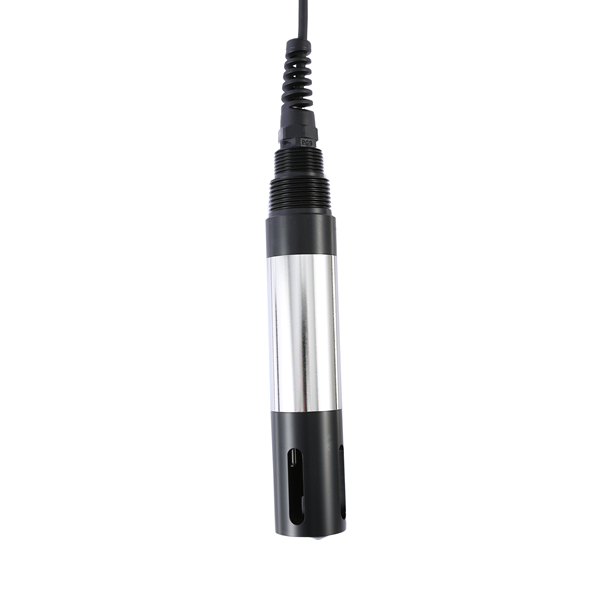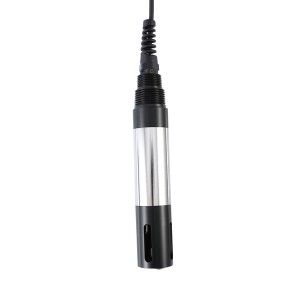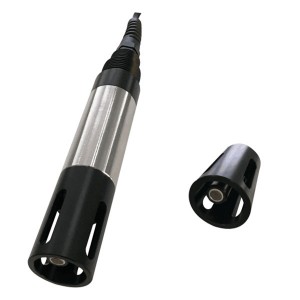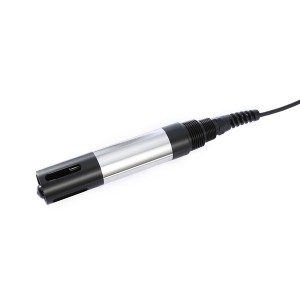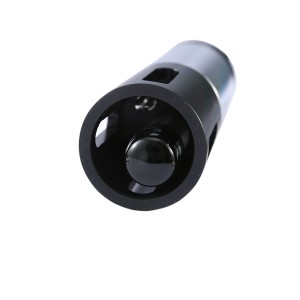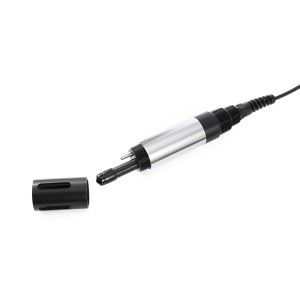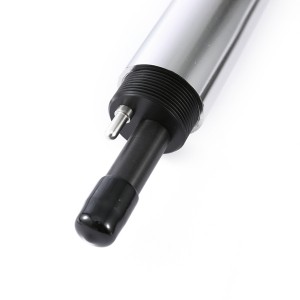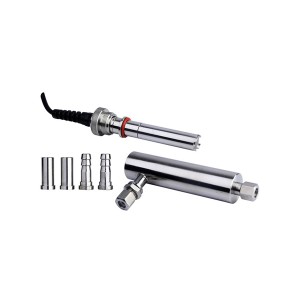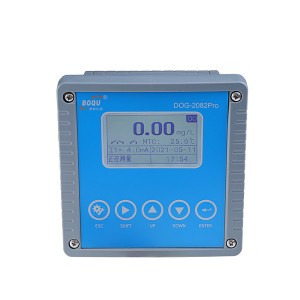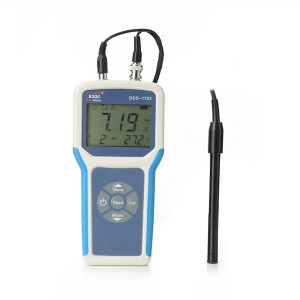Features
DOG-209FA type oxygen electrode improved from the previously dissolved oxygen electrode, change diaphragm into a grit mesh metal membrane, with high stability and stress resistant, can be used in a more harsh environment, maintenance volume is smaller, suitable for urban sewage treatment, industrial waste water treatment, aquaculture and environmental monitoring and other fields of continuous measurement of dissolved oxygen.
| Ultra resistant to pressure (0.6Mpa) wallop, imported (grit mesh metal membrane) | |
| Up thread: M32 * 2.0 | Measuring range: 0-20mg / L |
| Measuring principle: Current type sensor (polarographic electrode) | |
| Breathable membrane thickness: 100μm | |
| Electrode shell material: PVC or 316L stainless steel | |
| Temperature compensation resistance: Pt100, Pt1000, 22K, 2.252K, etc. | |
| Sensor life:> 2 years | Cable length: 5m |
| Detection limit: 0.01 mg / L (20 ℃) | Measurement limit: 40 mg / L |
| Response time: 2min (90%, 20 ℃) | Polarization time: 60min |
| Minimum flow rate: 2.5cm / s | Drift: <2% / month |
| Measurement error: <± 0.01 mg / L | |
| Output Current: 50-80nA/0.1 mg / L Note: Maximum current 3.5uA | |
| Polarization voltage: 0.7V | Zero oxygen: <0.01 mg / L |
| Calibration interval:> 60 days | Measured water temperature :0-60 ℃ |
Dissolved oxygen is a measure of the amount of gaseous oxygen contained in water. Healthy waters that can support life must contain dissolved oxygen (DO).
Dissolved Oxygen enters water by:
direct absorption from the atmosphere.
rapid movement from winds, waves, currents or mechanical aeration.
aquatic plant life photosynthesis as a by-product of the process.
Measuring dissolved oxygen in water and treatment to maintain proper DO levels, are crucial functions in a variety of water treatment applications. While dissolved oxygen is necessary to support life and treatment processes, it can also be detrimental, causing oxidation that damages equipment and compromises product. Dissolved oxygen affects:
Quality: The DO concentration determines the quality of source water. Without enough DO, water turns foul and unhealthy affecting the quality of the environment, drinking water and other products.
Regulatory Compliance: To comply with regulations, waste water often needs to have certain concentrations of DO before it can be discharged into a stream, lake, river or waterway. Healthy waters that can support life must contain dissolved oxygen.
Process Control: DO levels are critical to control biological treatment of waste water, as well as the biofiltration phase of drinking water production. In some industrial applications (e.g. power production) any DO is detrimental for steam generation and must be removed and its concentrations must be tightly controlled.

